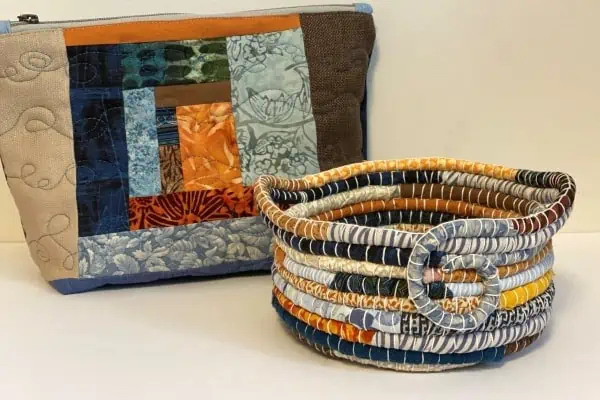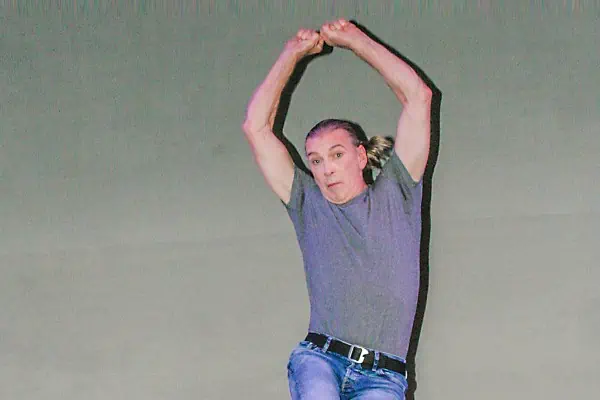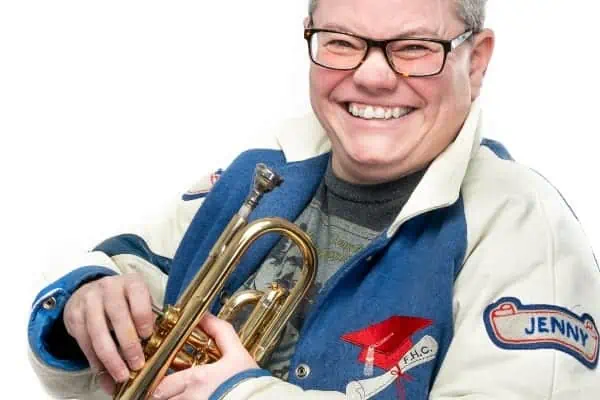Three years of collaborating, interviewing and gathering has culminated in one powerful play that shares both beautiful, heartfelt reflections and the harsh realities of northern living.
Busted Up: A Yukon Story presents the colourful and eclectic real-life voices of the Yukon – politicians, mothers, fathers and children – 33 voices, to be exact.
The play, produced by the local non-profit theatre company Open Pit Theatre, is woven together from the raw stories of locals – some whose First Nations ancestors have been connected to the territory for thousands of years, and others who arrived from abroad only to be devastated when their vision of the Yukon did not uphold their expectations.
“The story of the play itself is a collection of individual narratives, where people’s worlds collide or confront each other,” says Open Pit artistic director, playwright and performer, Geneviève Doyon. “Each individual has their own story, but together, they tell a collective story.”
One of the main themes of the play is people’s relationships to the physical land, including connections or disconnections. Busted Up also explores the relationships between aboriginal people and settlers, natural resource withdrawal and its impact on the land and people, and the growing number of immigrants now calling Yukon home.
Doyon and Open Pit co-artistic director and producer Jessica Hickman collected these stories from more than 70 interviews recorded from communities around the Yukon. These accounts reveal how people came to be in the territory, why they stayed, and their beliefs, roots and fears.
“You normally have a character that a playwright has created in their mind, so you honour the playwright when directing the show,” Hickman explains. “We are trying to honour real-life citizens that are out there in the Yukon right now, and trying to be as truthful and accurate in what we believe their intentions were in that speech.”
The honest, heartfelt and sometimes harrowing anecdotes were transcribed and juxtaposed together to create a script, using only the words of these individuals, with no additions or alterations. Because of this, Doyon and Hickman say there is a sense of cohesion and contrast that shapes the play.
“The dramatic arc doesn’t happen like in a traditional play, because this isn’t a chronological story,” Doyon says. “The tension comes from voices coming together or completely confronting each other.”
Seven performers will bring these words to life, with each actor playing multiple characters, including Doyon. She says this allows performers to really flex their acting chops, flipping quickly from one character to another. The verbatim format also presents the unique challenge of learning unedited text specific to that one individual. “All the stutters and hesitations are there,” Doyon says. “The little words say a lot and you can really depict discomforts. There are these hidden gems and nuances of character and humanity in verbatim script.”
While the play is largely about the words, Doyon says that Hickman, a trained choreographer and dancer, creates a physical ensemble with her performers, incorporating organic staging, movement and play.
The characters will be explored by three local actors (Brenda Barnes, Roy Neilson and Doyon) and four actors from Calgary and Vancouver (Caleb Gordon, Dinah Gaston, Joel Montgrand and Kaitlyn Yott). Hickman says integrating local and visiting artists of a variety of ages and ethnicities – including First Nations – was a purposeful decision to reflect those who were interviewed.
“What we did as far as the process of taking people’s words and stories, was bust them up and reshape them all,” says Doyon.
Hickman adds that audiences might be surprised by some of the things they hear their fellow community members say. In this way, the play is “busting” people’s preconceived notions of what people around them think and believe.
“It’s a reflection on hearing voices that are busted up, and that things aren’t always as they appear,” Hickman says. While some of that includes gloomy truths, there is also “a lot of hope and talk about change and what we need to do now.”
Doyon admits it’s scary to create art about “the stuff that is harder to hear.”
“But we’re proud to bring something that we feel is meaningful, thought provoking and relevant,” she says.
Doyon and Hickman hope that Open Pit Theatre’s first full production will help create a dialogue and connect people by examining and accepting these disconnections.
The presentation of Busted Up also aligns with Canada’s 150th anniversary celebrations. The co-artistic directors acknowledge the mixed feelings about this commemoration, but believe their play offers a diverse range of perspectives where First Nations voices are strongly represented.
From September 13th to 23rd, The Old Fire Hall will be transformed for 10 performances of Busted Up, with a rare alleyway configuration, that Hickman says will allow the audience to see the community as they watch the show. The production will also feature a visually stunning set designed by artist Michel Gignac.
“We have a stellar team and lots of high production value that we’re looking forward to sharing with the public,” Hickman says.
“The space is going to be occupied in a really unique way and possibly in a way that The Old Fire Hall has never been explored before,” Doyon says.
On September 26th, the production will travel to Haines Junction to present Busted Up at the St. Elias Convention Centre.
Doyon acknowledges that while they one day hope to tour to all communities where interviews took place, it was important to visit at least one community as it was a Yukon based project.
For more information and to reserve tickets go to the Yukon Arts Centre website (YukonArtsCentre.com) or Open Pit Theatre’s website (OpenP.it).




